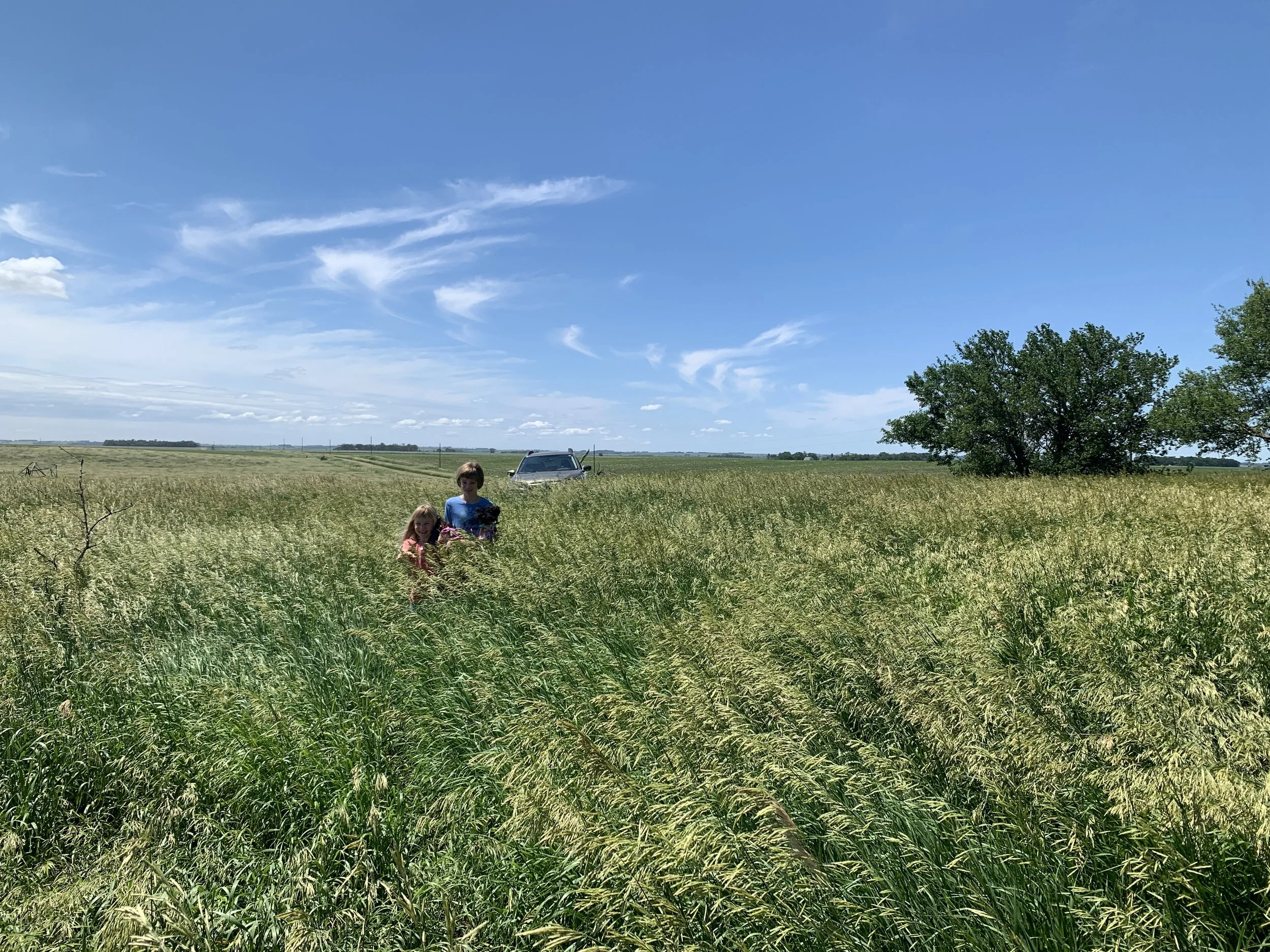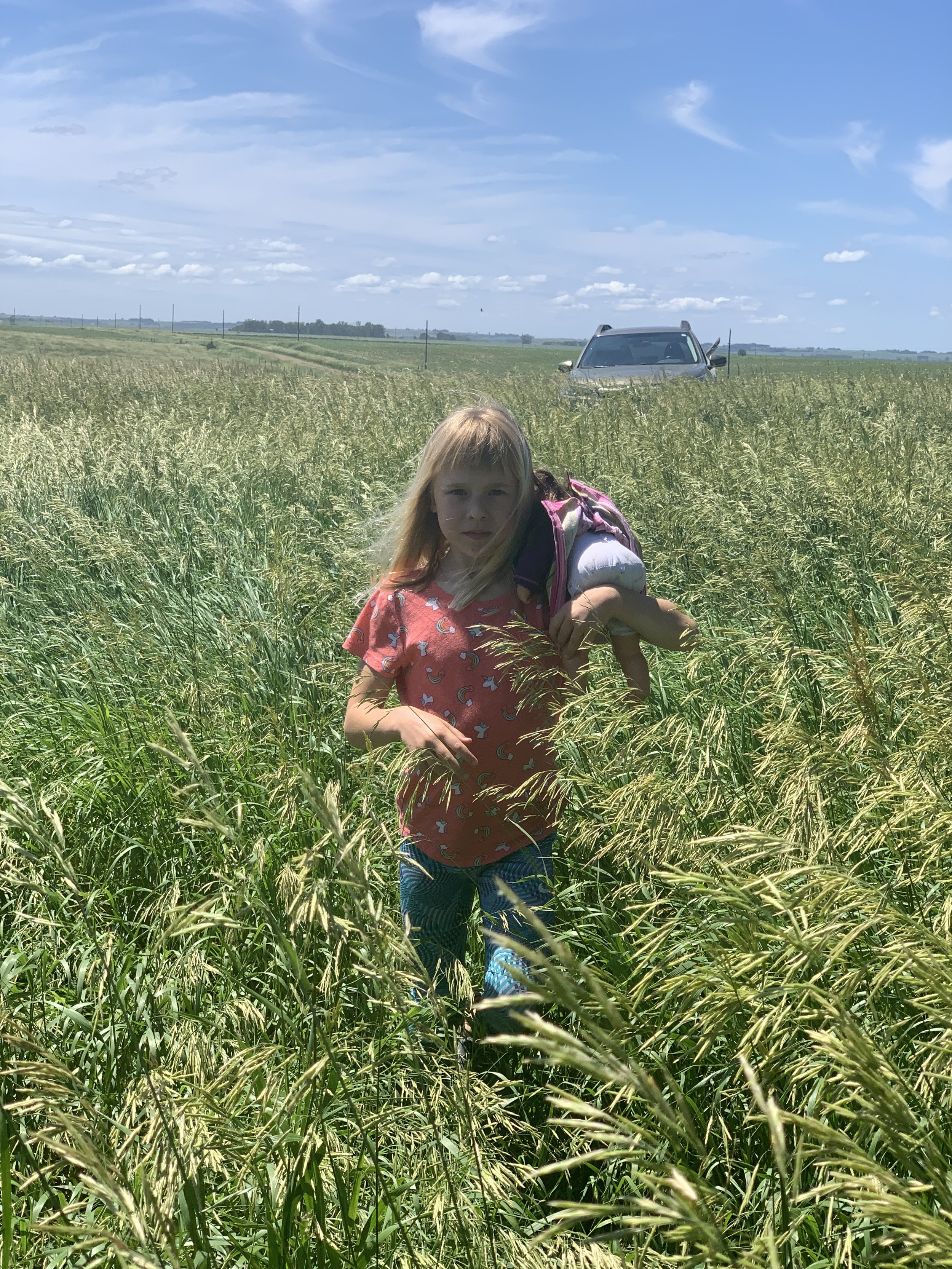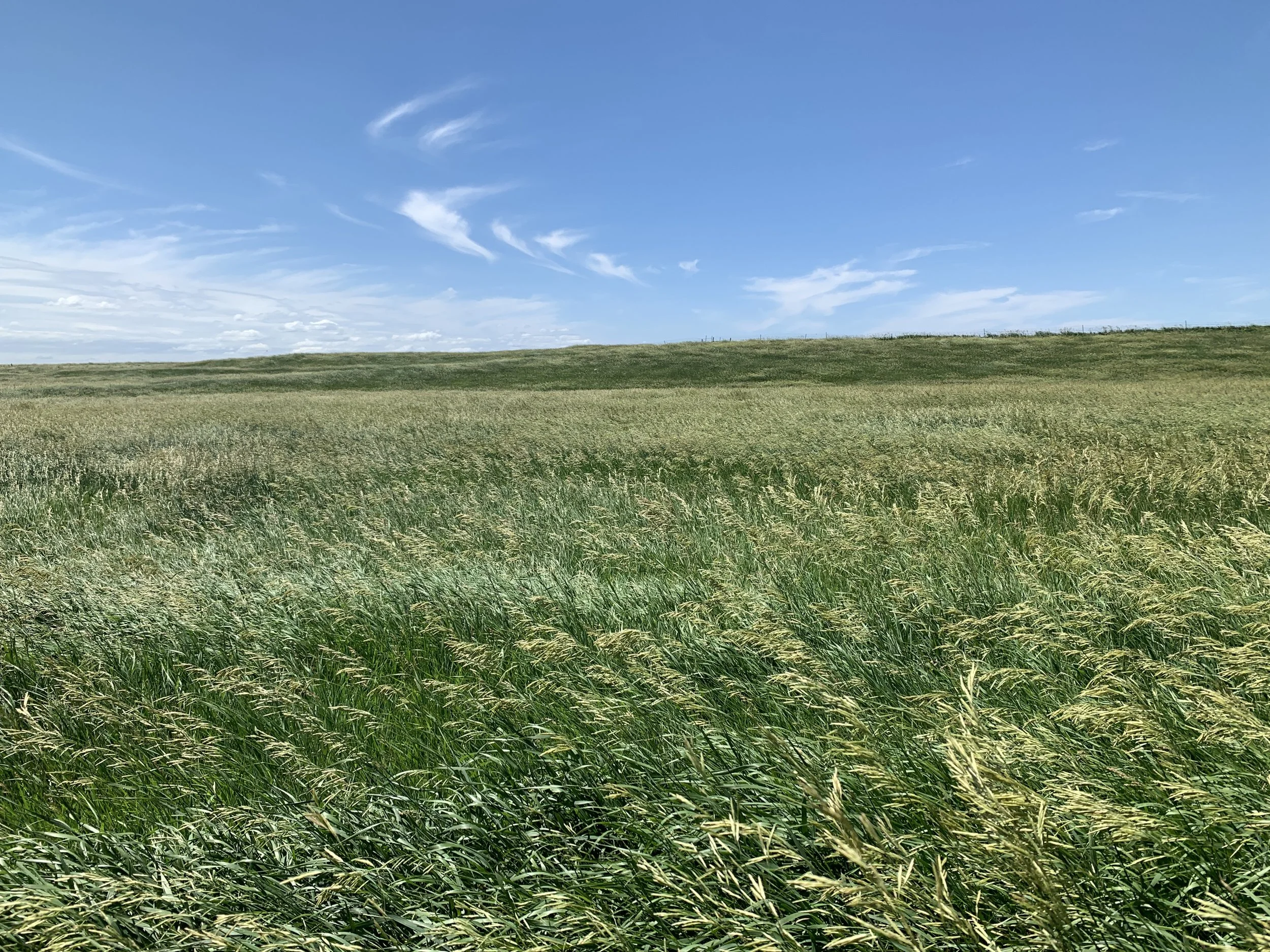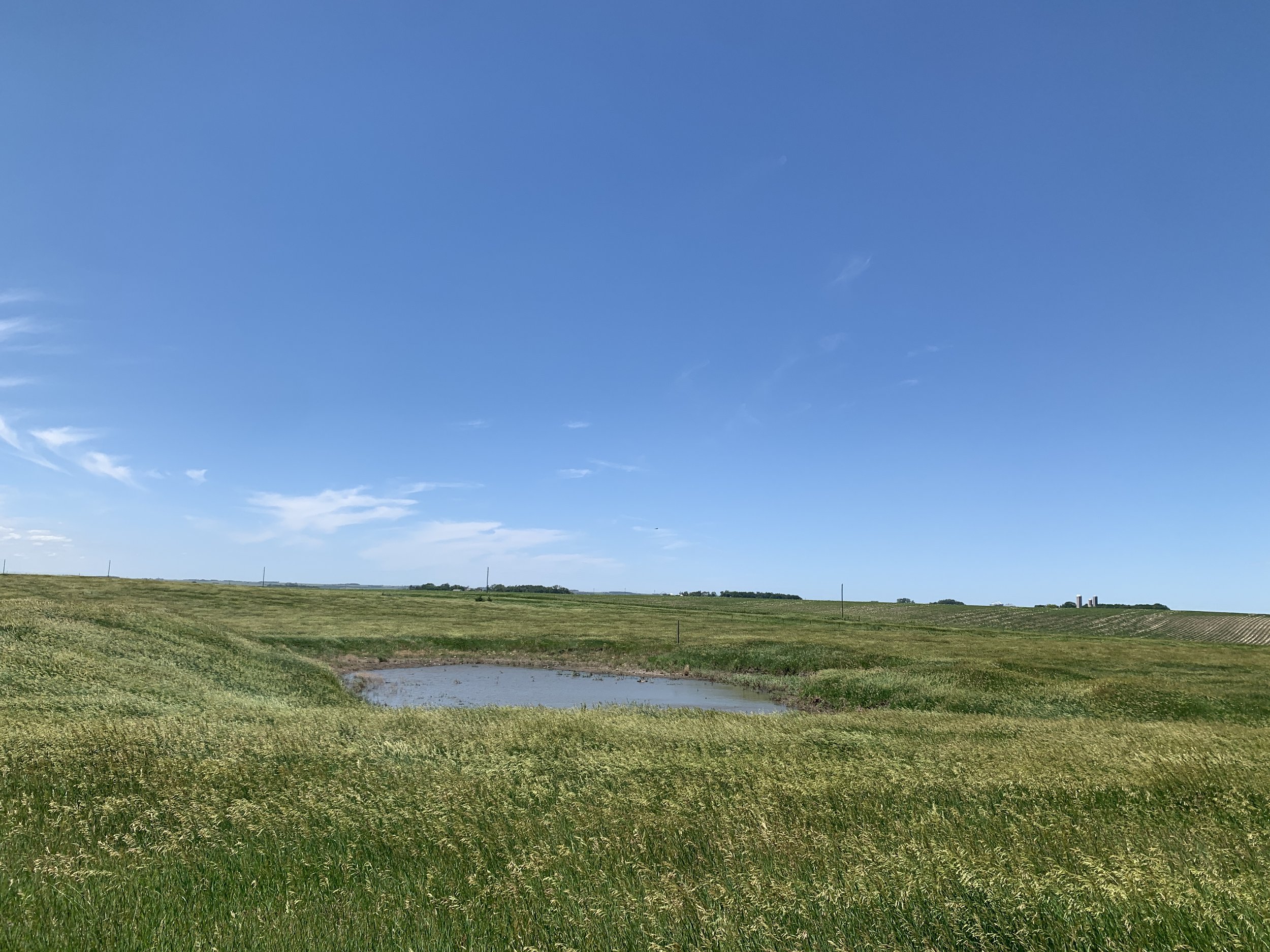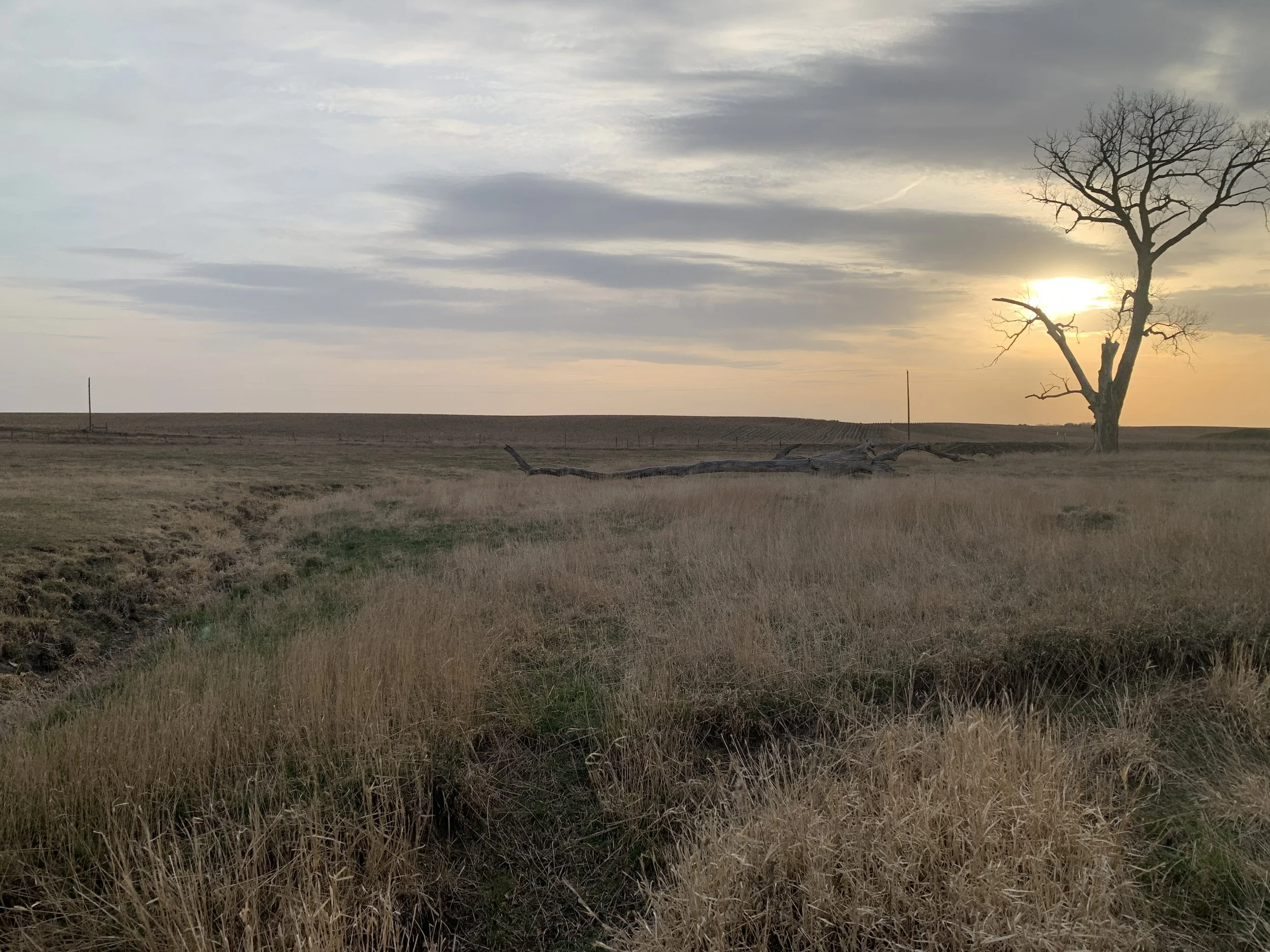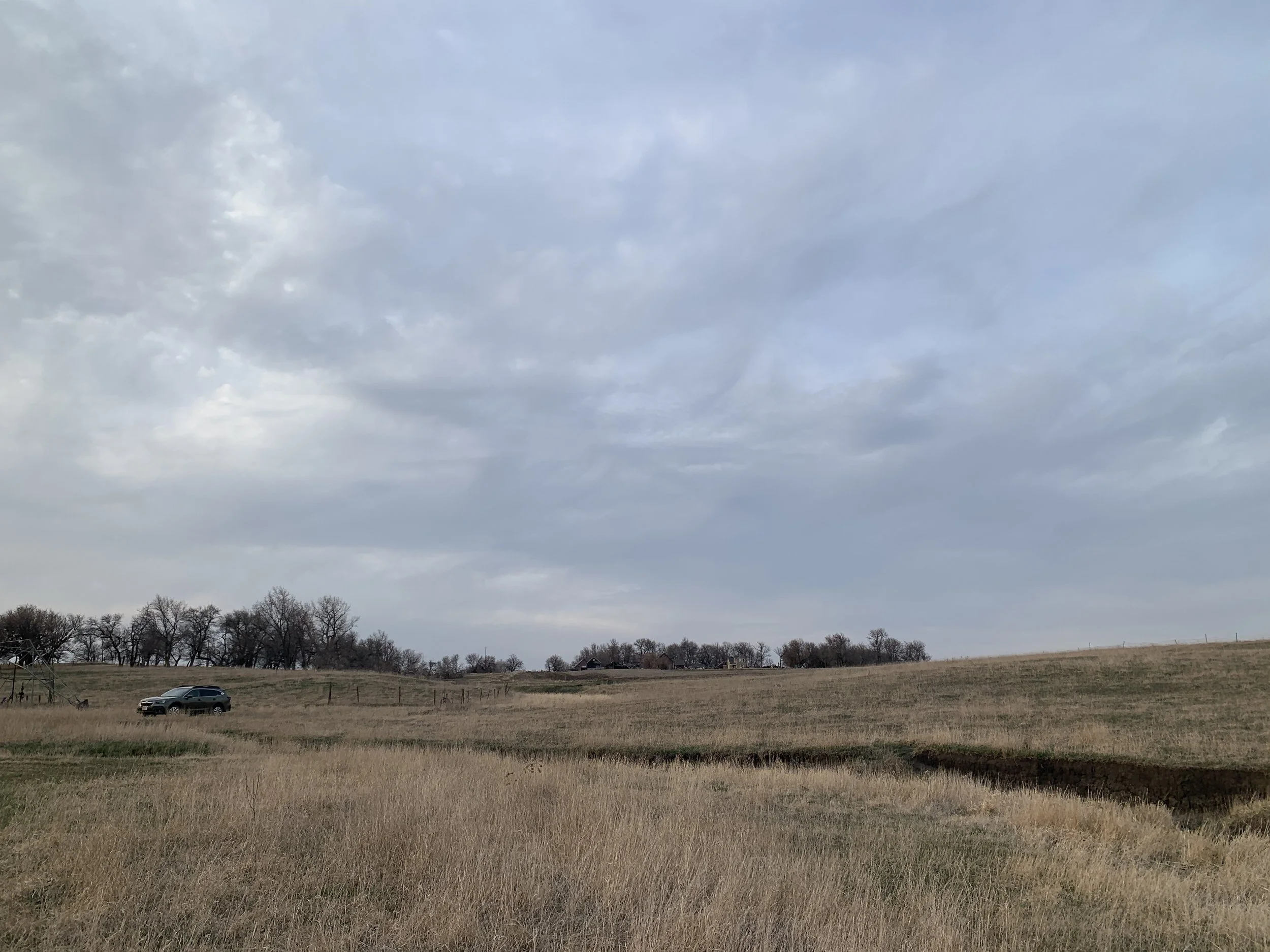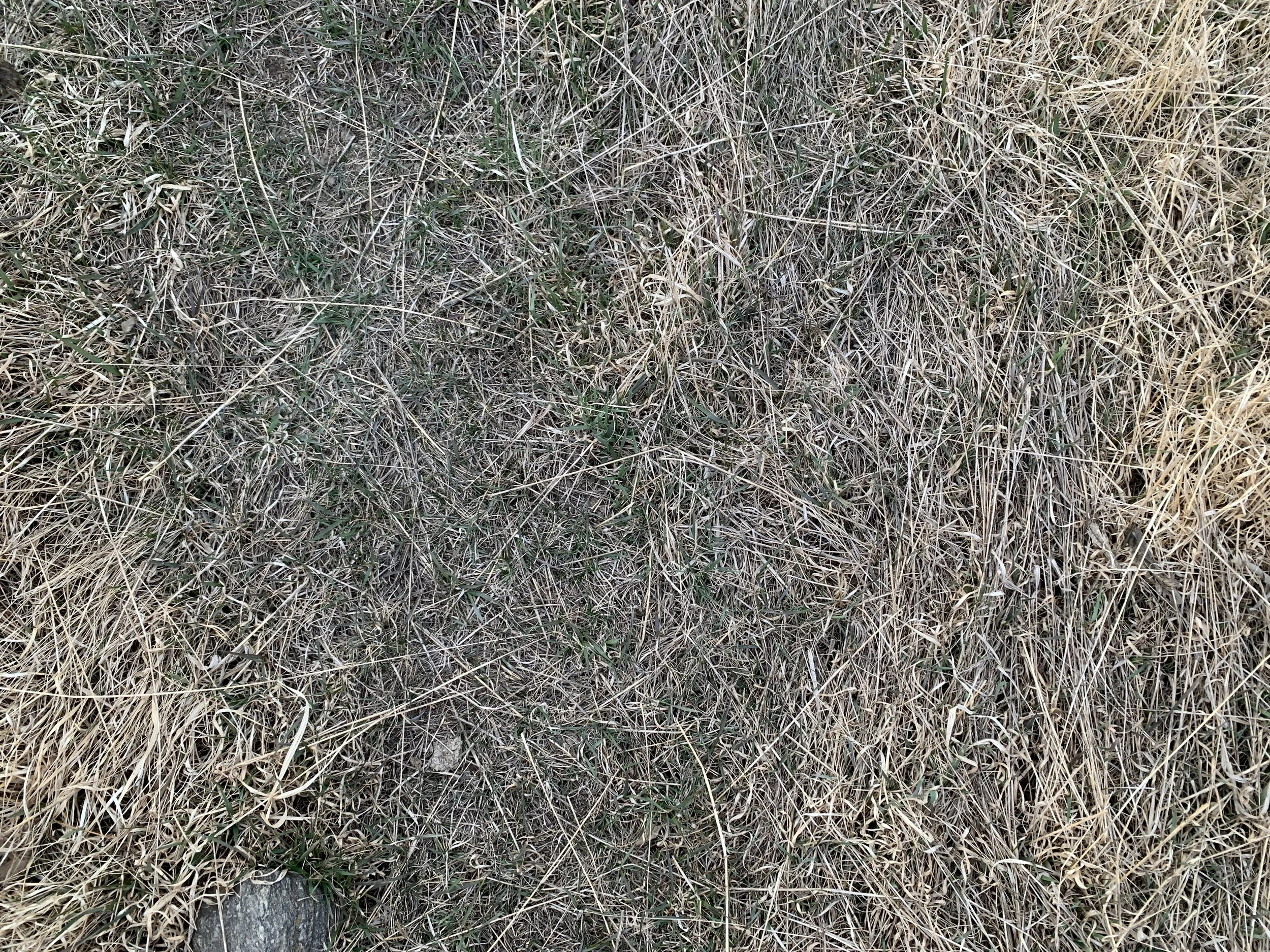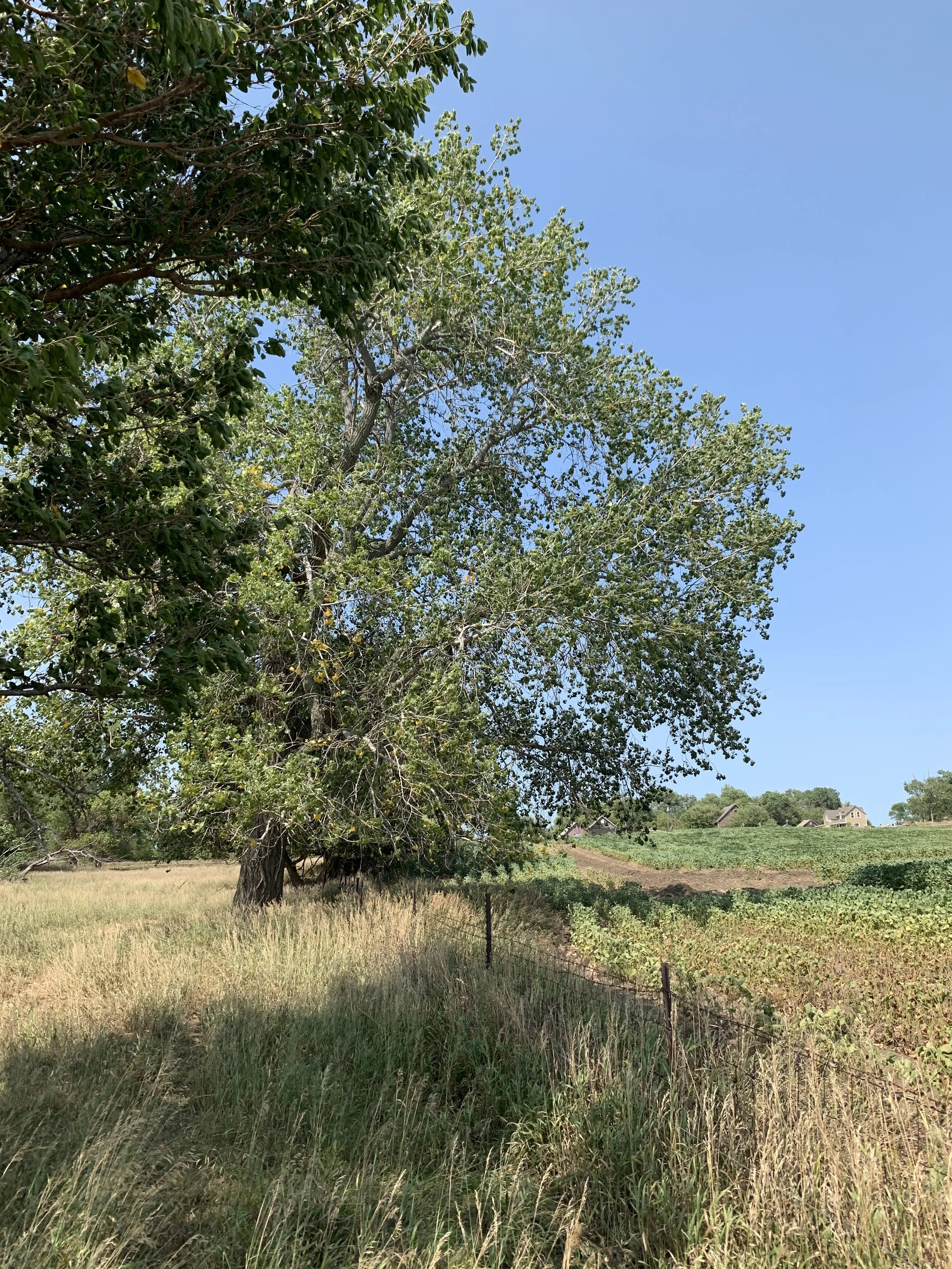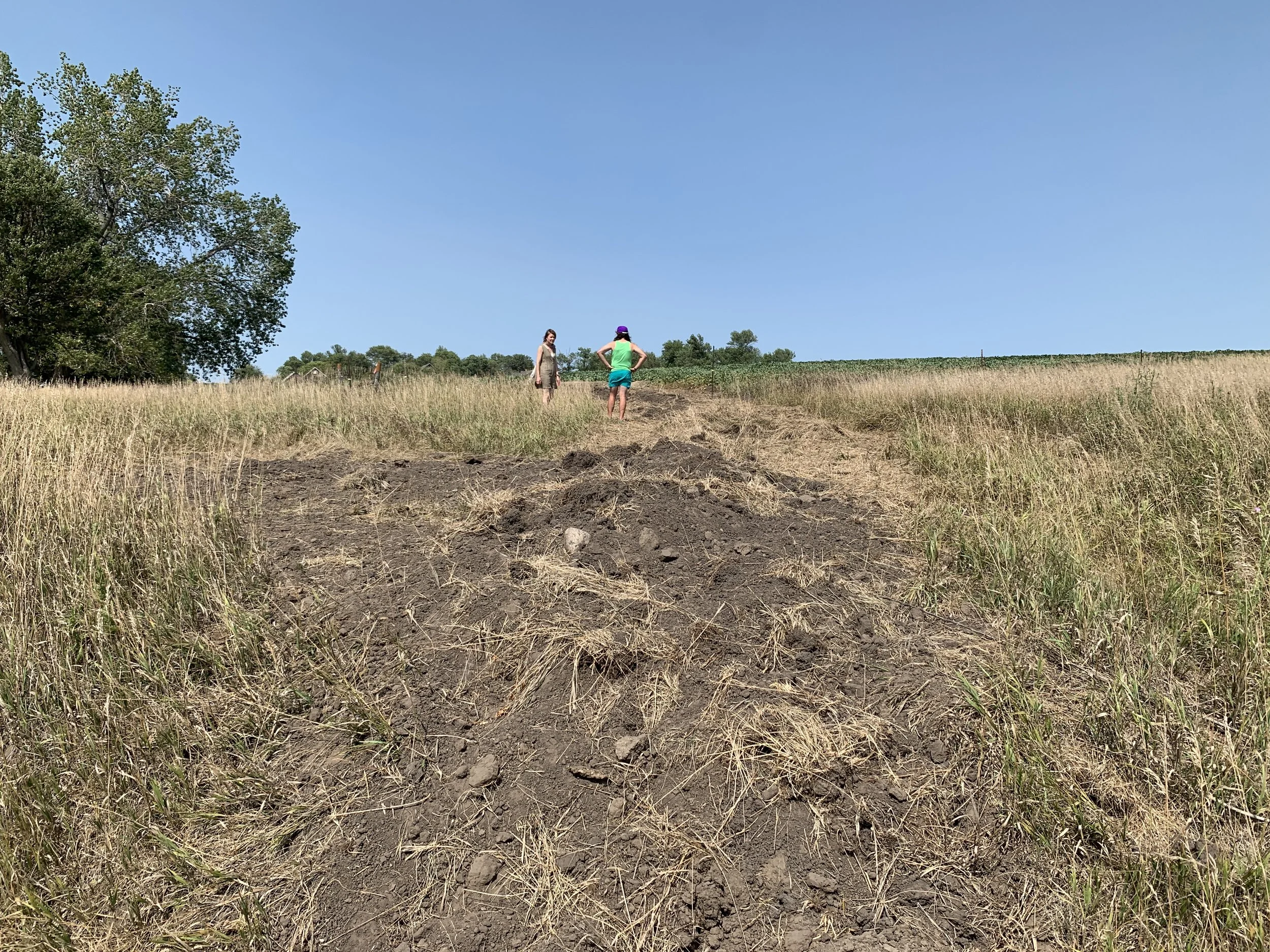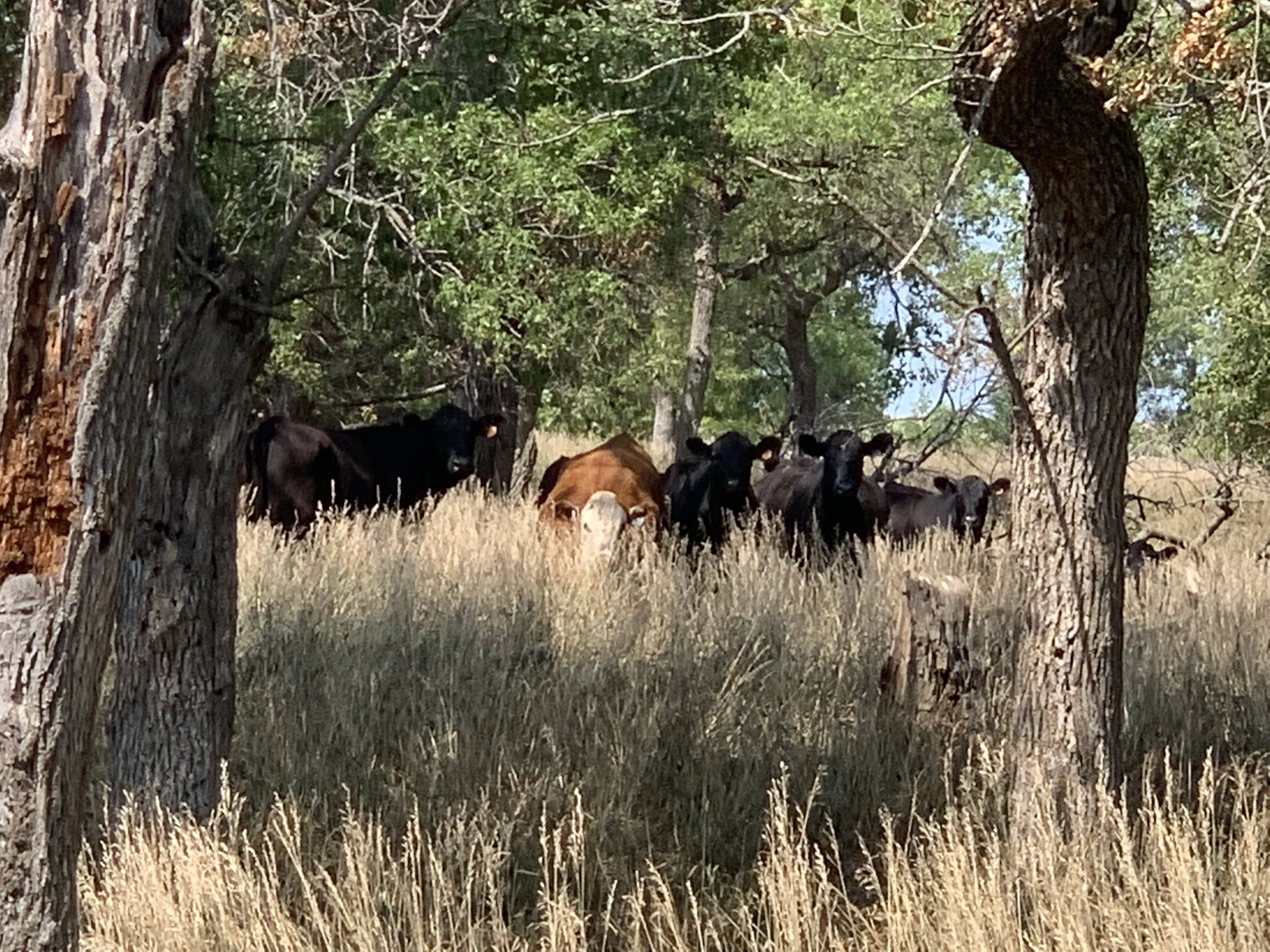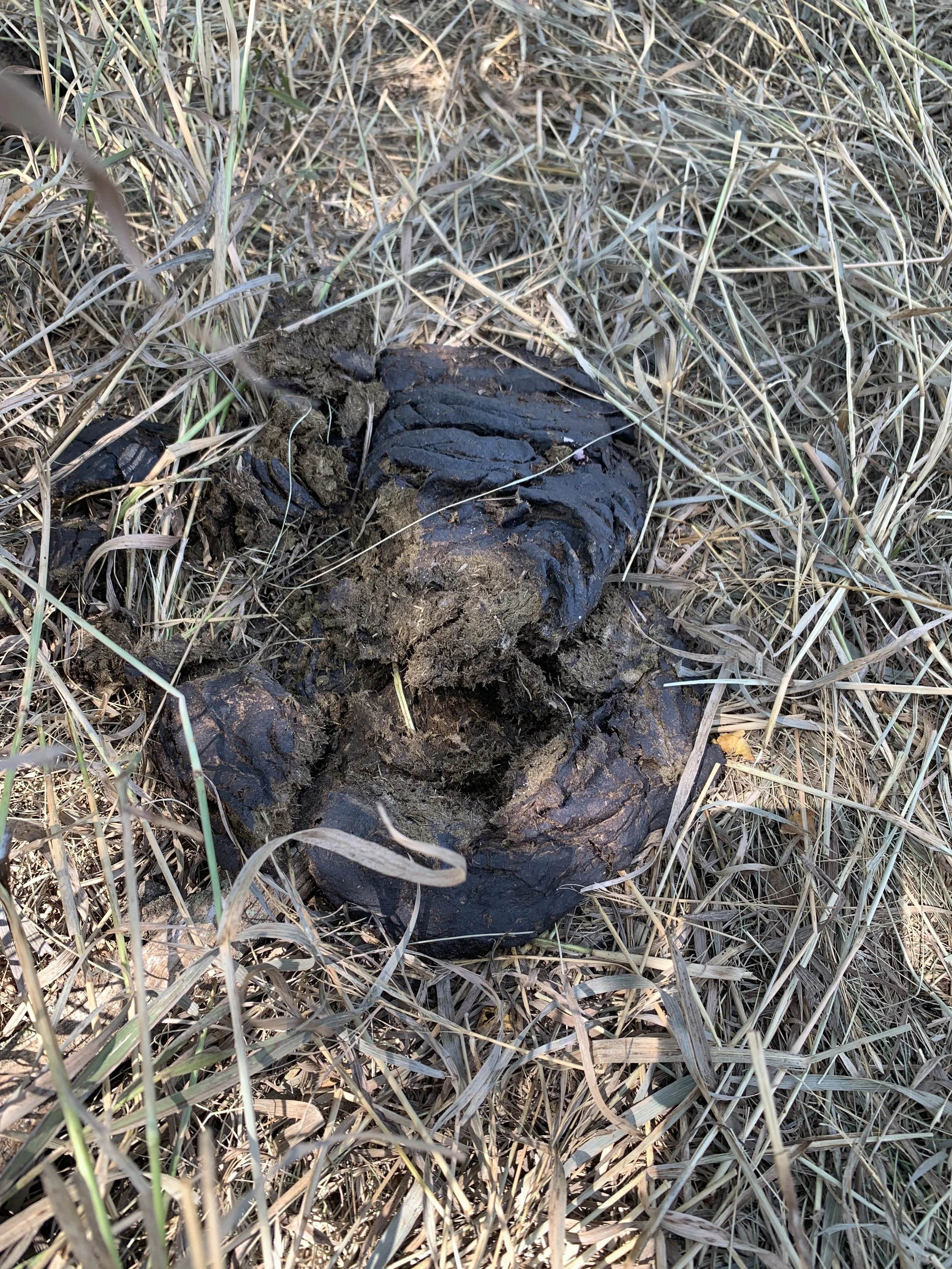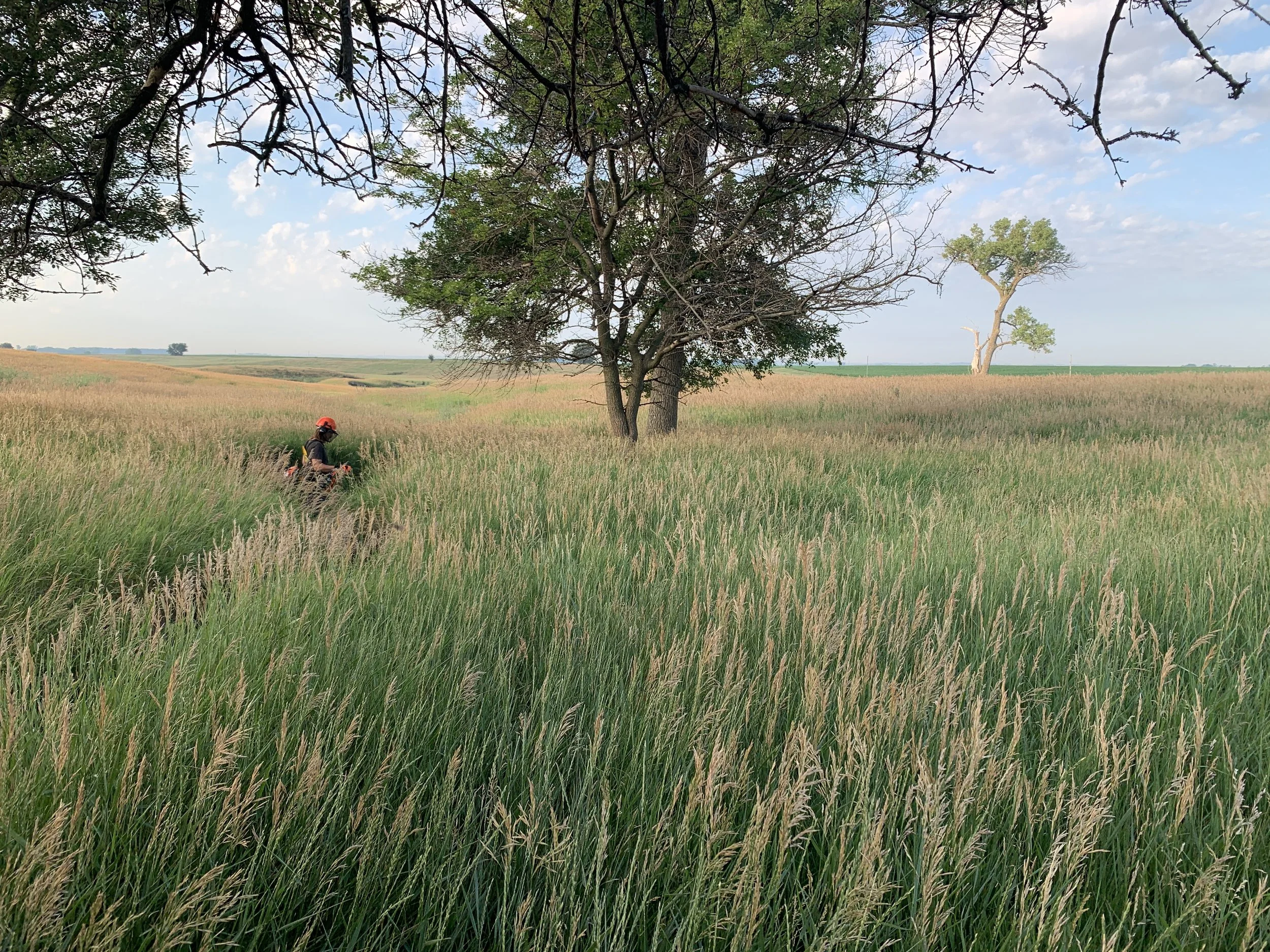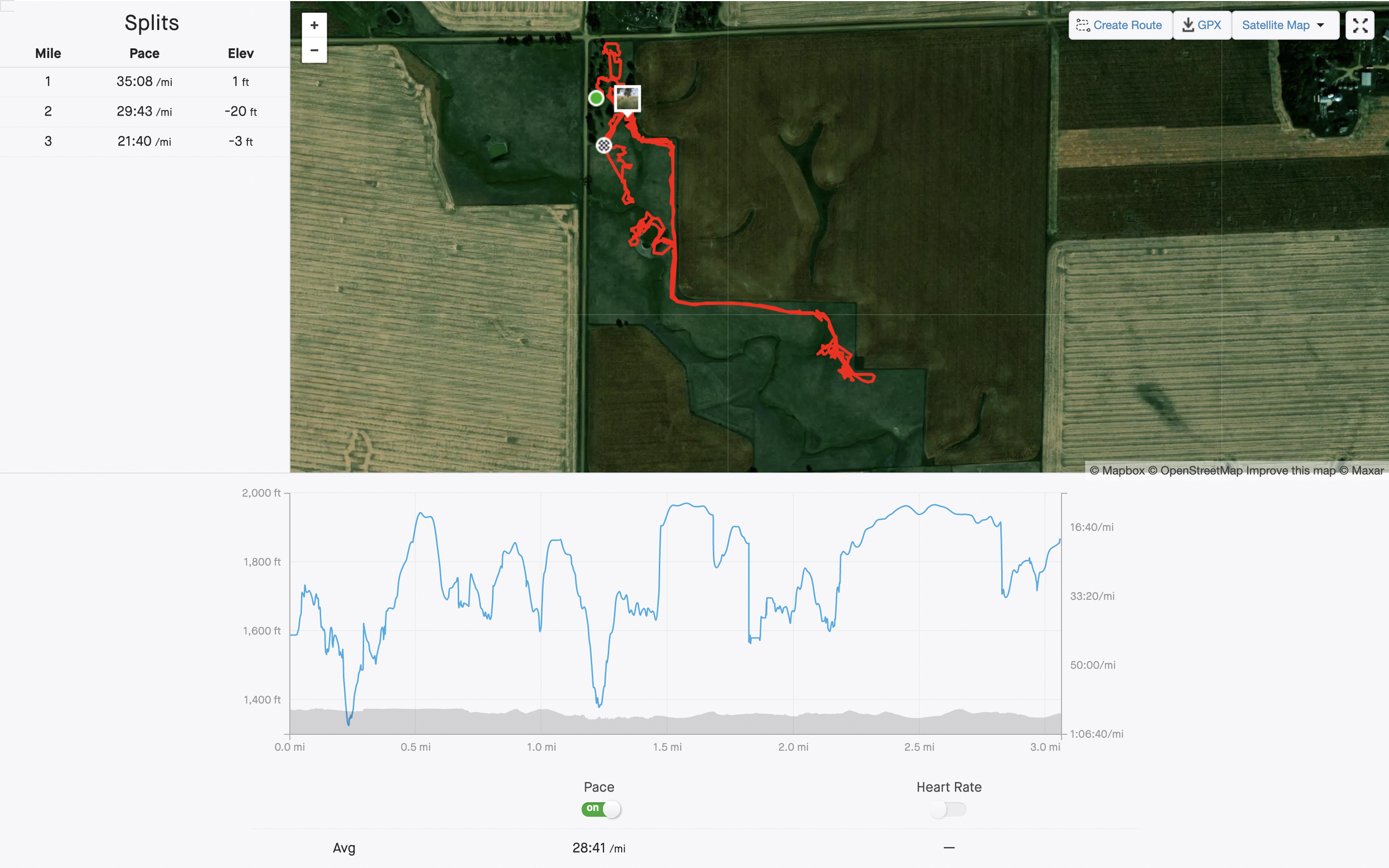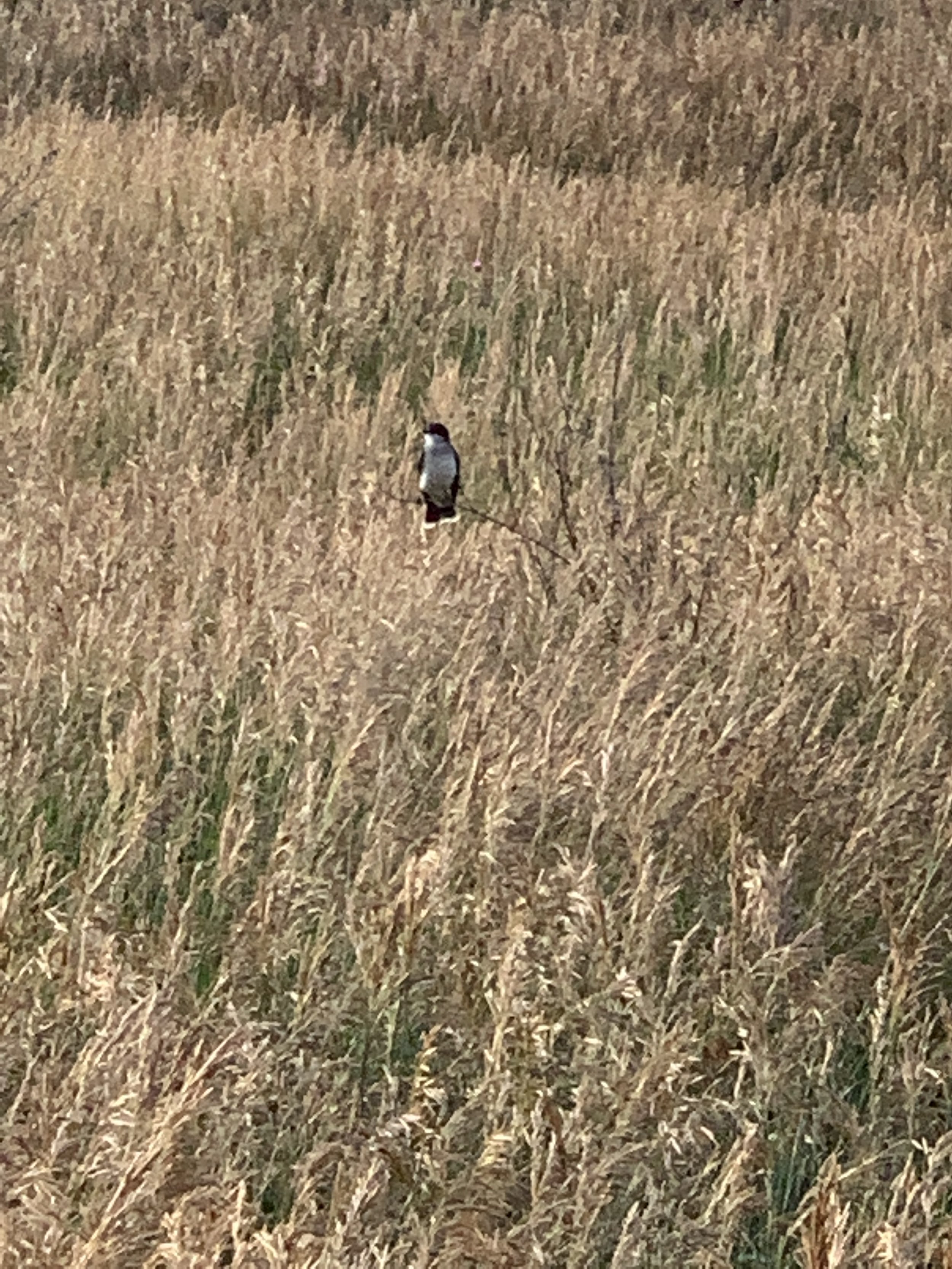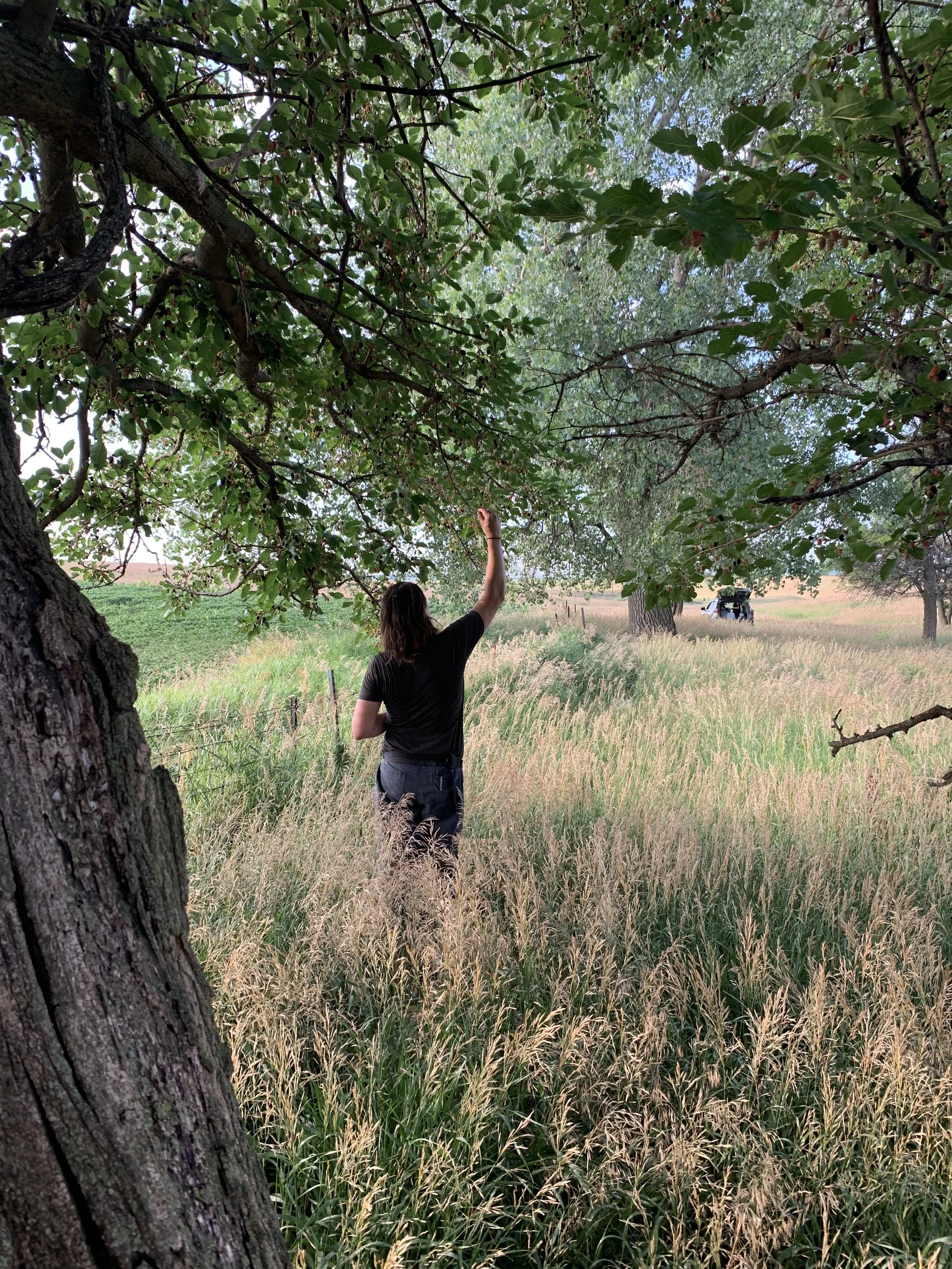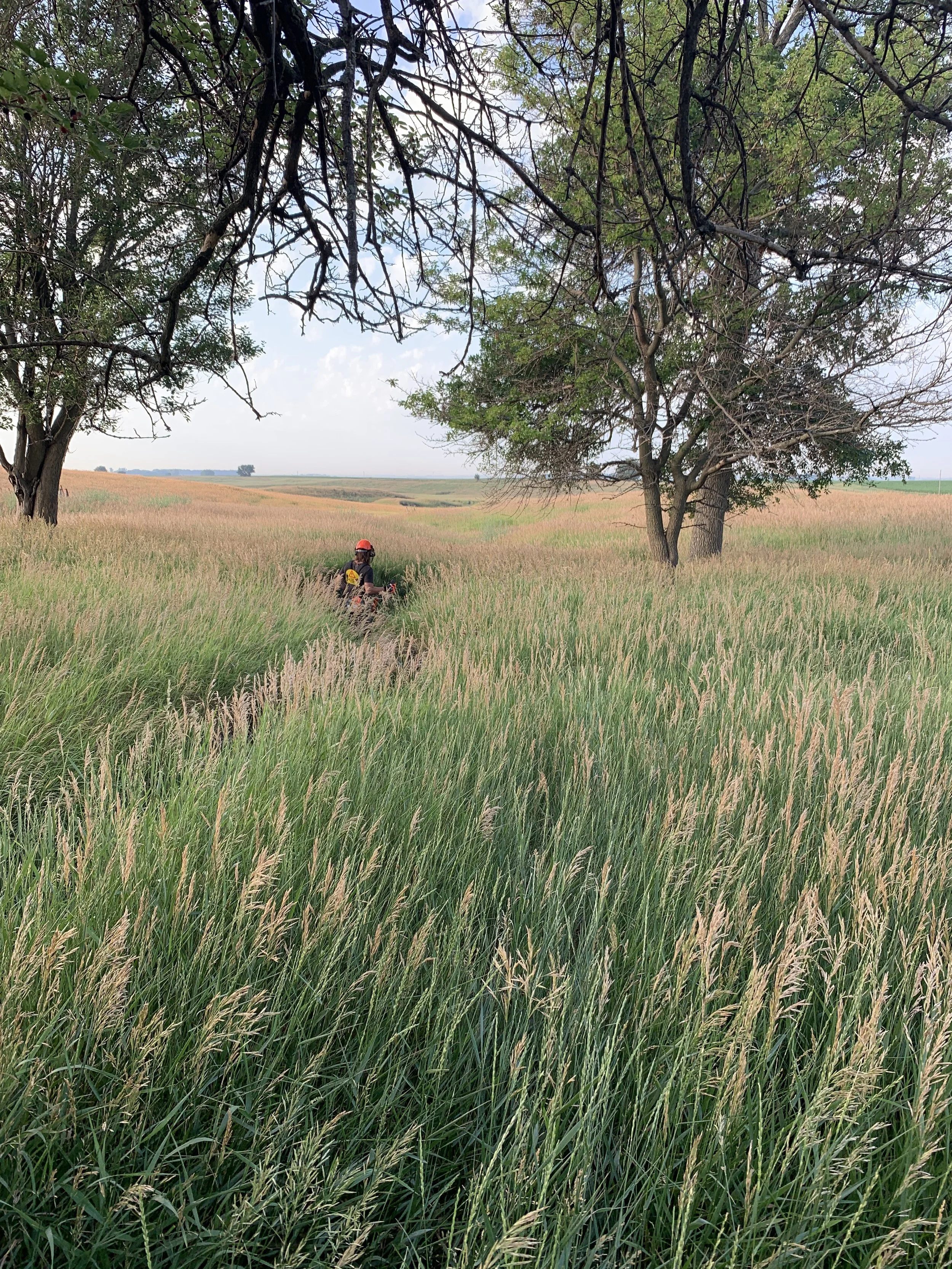What are the weeds telling us?
The presence of noxious weeds like thistle can tell us several things about the quality and health of our soil, as weeds are often indicators of soil conditions.
Firstly, the presence of noxious weeds like thistle can indicate that the soil is disturbed or damaged. For example, thistle often thrives in areas that have been overgrazed or where the soil has been compacted, as these conditions can provide ideal growing conditions for the weed.
Secondly, the presence of noxious weeds like thistle can indicate that the soil is lacking in nutrients, particularly nitrogen. Thistle, like many other weeds, is a nitrogen-loving plant, and it will often grow in areas where there is an excess of nitrogen or where other plants are not competing for the nutrient.
Thirdly, the presence of noxious weeds like thistle can indicate that the soil is not being managed properly. For example, thistle can spread rapidly if not controlled, and it can quickly become a problem in agricultural settings. This may indicate that the landowner or manager is not taking appropriate measures to prevent the spread of the weed.
Overall, the presence of noxious weeds like thistle can indicate that the soil is not in good health, and that further management may be required to restore its quality. However, it is important to note that the presence of a single weed species should not be used as the sole indicator of soil health, as other factors such as weather conditions, land use, and management practices can also affect weed growth.
The overlooked pollinator
If you live in the Great Plains of North America, chances are you've seen the white-lined sphinx moth. These striking insects, with their long proboscis and distinctive white stripes on their wings, are not only beautiful to look at, but they also play an important role in pollinating the plants in the region.
The white-lined sphinx moth, also known as the hummingbird moth, is a common sight in the Great Plains during the summer months. They are most active during the day, hovering over flowers with their long proboscis extended to reach the nectar inside. As they feed, they inadvertently pick up and transfer pollen from flower to flower, making them an important pollinator.
One of the unique features of the white-lined sphinx moth is its ability to hover in mid-air, much like a hummingbird. This makes them particularly adept at pollinating flowers that are deep and narrow, which can be difficult for other insects to access. In addition to their role as pollinators, these moths also serve as an important food source for many animals, including birds and bats.
Despite their importance, white-lined sphinx moths are often overlooked by people. Many mistake them for hummingbirds, or simply don't notice them among the other insects buzzing around the flowers. But if you take the time to watch these beautiful creatures in action, you'll see just how important they are to the ecosystem of the Great Plains.
So the next time you see a white-lined sphinx moth hovering over a flower, take a moment to appreciate the role it plays in pollinating the plants around us. These small insects may be easy to overlook, but they are an essential part of the web of life in the Great Plains.
Life in the tallgrass
So we went back to the prairie again today. I cut some weeds and let the girls run again. Along the way, I found a bird’s nest in the thistle and saw a white-lined sphinx moth enjoy the thistle. Amazingly or sadly the thistle is the only thing blooming so the pollinators are making the most of it. Kind of sad to cut it.
The triangle areas along the border with the Waltners that is now untilled and going a bit crazy with the seed bank of super-resilient weeds. That field to the east is very sandy.
Another great find was a robin’s nest in the thistle. I left the plant standing so the little guys had a fighting chance!
Let the girls run
Sometimes you have to be wild in wild spaces. I took my two youngest girls and turned them loose. The grass was knee-high and there was water in the dugout. This is good. We need the moisture. The girls brought their dolls. The wind was 24 mph out of the NW and it was 79 degrees out. Clearly from the photos, you can see the smooth brome (Bromus inermus).
May Derecho
A broad, 400 mile-long path of destructive winds from a derecho and seven tornadoes moved from southern Nebraska to central Minnesota during the afternoon of May 12, 2022. Gusts as high as 107 mph were recorded in some areas.
And the big old cottonwood went down.
I got a text from the neighbors:
So as soon as I had a few hours available I hopped in the car and headed out. On the way there was a ferocious barn burning that seemed unmanned. I even called the fire department and they said they were aware of it.
And sure enough the old tree of life had completed it’s journey. Based on my calculations it is about 120 years old. It will take some chainsaw work to get it out of the roadway.
We are also prepping to move the fence in partnership with our neighbors to the east.
Dry Spring Evening
I popped out to the prairie again this evening. The thistle were already hard at work and some early grasses. This would be a great time to burn in the next couple of weeks. I am attending a burn clinic in Mitchell to learn how we can incorporate fire into our management strategy.
Walking the fields
Like any solid relationship, it takes time, and lots of listening. Today I just walked the fields. Listening. Trying to understand what they understand. In the winter the prairie mostly sleeps. This winter is very dry so the wind through the frozen dried grass sounds like the ocean.
Chainsaw day
Today I went out with the kids and did some chainsaw work from the trees we recently downed. It was a beautiful day on the prairie.
Let’s talk restoration
[Transcript]
Hey, I'm here doing some prairie restoration on Karol's prairie late October of 2021. And see kind of a mess of trees behind me this fence line here existing fence posts. fence line goes up and sort of jogs over there. And old white mulberry on it that we're really at the end of life. And so with the help of a couple of tractors, we've tipped them over away from the fence line and put them up in a couple of brush piles here that we're going to end up cutting with chainsaws down. To where they're more manageable sizes, having some firewood for sale maybe. And then leave some of the brush for habitat for the birds and critters that like to live up here in the old shelter belt.
And our hope is that on the on the west side of the shelter belt you see over here we still have the standing part of the shelter belt. Most trees drop saplings each year that get eaten or sprayed or mowed or whatever happens to them. And we're going to try and do some natural selection of those by putting up some fencing around some natural saplings that nature has chosen to support in this soil.
And we might also do some other tree introduction as that shelter build on that side is also old and about 80 years every two years or so you got to do some renovation work.
Firstly, you would do it as you go along. So as trees start to die, you replace them with more biodiversity of species unfortunately, back in the day.
We didn't think in those terms and so we might have a whole shelterbelt that's one species or two species all planted at the same time and lo and behold, they all died same time or they all have the same risk of predators or disease at the same time. So we'll try to reintroduce some biodiversity.
We've got a couple of species over there, but not a lot of diversity. So we cleared out this shared fence with the neighbors who I'm meeting with this morning. And this should help them with some water on their side trees will take water 50 feet into prairie lamb. And so as they're farming their land right across the fence, doing some soy, I believe that appearances are for sure and fenceline you see their crops right up against the fence. We're gonna let this be sort of a 50 foot buffer to make sure that we're being a good neighbor and they're being a good neighbor. So this is part of the collaboration that's happening here as a 10 year project. We're restoring this pasture that goes all down through here you see the tractor sitting over there. I'm sitting at the way north end of it. It's just 45 acres but we hope it provides a lot of natural habitat wildlife habitat for species as they moved through the area. So super excited to meet with the family this morning, our neighbors and look at their progress and talk about how we're gonna fix the fence. Thanks
Walking the land
I went back out to Karol’s to see where the other drain tiles came out of the ground and see what new plants I could find. Was quite please to find a mushroom. There is almost no evidence of water on the property… except for the fact that we routinely find boots that have washed from higher elevations to the north.
Plants:
Strophariaceae
White mulberry (Morus alba)
Prairie Update
Hello Prairie Team,
This email is meant to serve as an update and record for everyone.
As a refresher, the mission of this land is:
Our mission for Karol’s Prairie is to create a sanctuary that restores and preserves this land as
a natural, uninterrupted prairie. Our vision is for Karol’s Prairie to be a place abundant with birds,
bees, butterflies, animals, and native grasses. This land should forever be a place for
conservation, education, and inspiration.
With that in mind here is the most recent update.
Soil Management
In late July/early August we partnered with Tom Graber, a neighbor, to graze his cattle on the prairie. This is by no means ideal grazing land yet as the forage isn't amazing and the well is not working. Tom was ok with the current limitations and opened a gate on the sound end of the pasture. One of his herds has been grazing the pasture just to the south. This property, which is connected to the Brue family, has water available for the cows. Tom is using his charger on our electric fencing to keep the cattle in. In exchange for this grazing, Tom is working on getting the well functioning. The well is just below the now collapsed windmill. (I would love to see us replace the old windmill with another windmill to pump the water.) On the attached image KarolsPrairieUpdate1.jpg you will see that the redlined area is our pasture. The yellow lined is the neighbors where the cow has been. The blue smudge at the bottom in the yellow area is where the water is for the cows. All said and done the cows walk a mile between the shade of our shelterbelt and the water of the south pasture. If you recall, integrated grazing is a component of our prairie restoration.
Under natural conditions, grazers are nature's gardeners:
Their hooves create seed-to-soil contact, helping dormant seeds to germinate and establish.
They break soil crusts that keep seeds from growing.
They trample standing vegetation into mulch that protects the soil and keeps it moist.
Their guts act like living compost piles, turning vegetation into high-quality fertilizer.
By pruning stale growth, they keep forage plants at peak production.
Pruning a plant's top causes its roots to self-prune. These dead roots become new soil.
The other historical land management strategy we hope to deploy in the future is burning. One final note is that grazing land isn't the goal. It is a tool we will use to reach our goal.
Shelterbelt
On the north end of the prairie, there are about 36 trees. Most have been there as long as anyone can remember. Shelterbelts in South Dakota have an expected lifespan similar to that of a human 60-80 years. While there is no longer a homestead to shelter, we do believe trees in this part of the property do and will continue to provide key habitat for wild species as well as shade for the cows and occasional volunteers. South Dakota NRCS is keen on these areas and they have provided this nice guide to some of the benefits.
https://www.nrcs.usda.gov/Internet/FSE_DOCUMENTS/16/nrcs143_010026.pdf
They also have a nice guide on WINDBREAK/SHELTERBELT RENOVATION.
https://efotg.sc.egov.usda.gov/references/Agency/SD/Archived_650SGS_080707.pdf
We need to start this renovation with the removal of the 6-7 trees on the east edge of the property that shares the fence line with the Waltners. Currently, our trees extend over their fence considerably enough to make planting and harvesting that fence line difficult. Additionally, these trees are so old that they are literally just splitting and falling down. Maintenance on these trees is many decades overdue. I am recommending, after consulting with Ann and Tom, that we remove these trees with a track hoe (large tractor) by tipping them over into our pasture. Unless they are elm trees, we will just leave them to rot and serve as continued habitat. In the future, we can discuss replacing this line of trees with a new generation of trees. The Waltners have agreed to let us hire them out for this. We are estimating about $2k in time and equipment to do this work. Because we have not yet finalized the transfer of the land and funds to BAM this investment will need to be made by the Brue family.
Weed Management
I was out on the property last week and the thistles I did not get to have gone to seed and a small fresh batch of new thistle has come up along the creek in the shelterbelt. I will be heading out again next week to clear the remaining thistle from the eastern fence line manually and Tom is going to check, and possibly spray the thistle along the creek. If we are lucky we will have the thistle managed in 3-5 years with continuous pressure from cutting and spraying. At this point, we do not believe it is worth the investment to spray the whole pasture until spring next year. We have asked Tom to consider spraying it as he already does this in the neighboring pastures. Our thistle is most likely the result of overgrazing and lack of plant competition. Basically, nothing has been trying to stop them.
Waltner Drain Tile Project
Our neighbors to the east were able to get in the field and set drain tile. You can see where they set their tile and piped it down to our creek on the attached "Norway 15a" pdf. From a conservation and restoration plan, this option was the best of the least ideal options we had. The Waltner's have the legal right to drain their field right over the fence line but they made the additional investment to run pipe all the way down to the creek. We appreciate their additional investment. After consulting with Omar De Kok-Mercado from Iowa State we decided that the best way to integrate these drainpipes into the prairie, and minimize erosion, and capture the nitrates is to install a saturation buffer. On the attached Norway Buffer .pdf you can see how it would require us to put in additional lines that run alongside the creek and allow the water to basically seep in instead of just flow out of a pipe. Erosion and Nitrates are two things we don't want to send downstream. Andy Nickel who installed the drain tile for the Waltners said there is ample funding for this additional infrastructure and he would be eager to help us get this on the 2022 calendar. We will keep an eye on and document the effects of these drains on the land moving forward.
Land in Trust 501c2
Our attorney armed me with tons of homework to set up the new 501c2 structure. Once this structure is finalized the land title will be transferred. This 501c2 will have a board of directors hopefully comprised of family members, neighbors, tenants, and BAM people. All of us want and need these wild spaces to thrive. We all depend with great fragility on clean water and thriving pollinators. We hope that this land can do that all while supporting diverse wildlife. I will be asking many of you to serve on this board.
In the next 30 days:
Tree removal
NRCS Meeting 8/31 at 9a on the property.
If for some reason I misspelled anyone's name or got some information incorrect in this email please kindly let me know. My goal is to provide clear and comprehensive communication regarding this project.
Feel free to contact me with comments questions or concerns.
clint
Checking the drain tile
We came to see the impact of the tile on the land and see the cows. It’s obvious large machinery made its way around the land, tracks are everywhere. Happy to see cows and fresh dung on the prairie.
Grazing partner
We have partnered with our neighbor Tom Graber to graze the prairie. He is taking care of fencing and water as our windmill is down.
Potential border changes
The neighbors are now asking to move the fenceline on the east side of the property to make plowing and harvest easier for them.
Good morning all,
Thanks for the gift of your time last week. I'm excited about being a neighbor (on two sides!) to this Prairie Restoration project. Dad and I spent some quality father-daughter time on the 4-wheeler at the end of last week to walk the pasture and consider potential softened borders. We came up with a few ideas for you to consider. I've attached a pdf of the tile map with some border possibilities. We want to be clear that we understand that this is your ground, plain and simple. We are grateful that you're open to considering some alterations to the borders-- we know they'll make our lives easier, and we're quite confident that these alterations will make your lives easier too, especially when it comes to noxious weed management, which is a chronic challenge for everyone. It is our hope that this process aids in better stewardship of the ground.
Do let me repeat that we are happy to cover the surveying costs and will "buy out" (at a mutually agreed-upon price) any additional acres we may acquire via altered borders. We would be in charge of fence and tree removal.
That said: starting on the north side, we'd propose moving the NW corner of the field (281st street) about 60'-70' farther west to skim the creek and take over the stretch of volunteer fence line trees on the east side of the pasture, thereby eliminating corner I. The trees are in bad shape, and big branches come down with strong winds. From the newly-surveyed point on 281st street, we'd propose a diagonal, either to the already established/surveyed corner II (segment B) or to a to-be-surveyed point north of that (segment A.) Utilizing segment A would imply reclaiming that previously-tilled corner for the prairie restoration.
Depending on which terminus is used at corner II, a straight line would then be made to corner III.
From corner III, a straight line could be drawn to corner IV (segment F), but that terrain gets a little wild, and we may prefer making a new corner IV east of the currently surveyed corner IV. We suggest positioning the new corner IV at the corner of the field south of the southernmost border (segment E). Again this would mean reclaiming previously-tilled ground at corner IV.
In any of these potential border permutations, we are excited that we would be able to plant and spray the corners effectively to manage weeds, noxious and otherwise. We also think that it will be easier for your group to manage the thistle population as well-- some of the worst thistle colonies seem to be in the corners abutting the field. Those thistles would then become our problem and my mother Sharon is a thistle vigilante on the 4-wheeler, riding the fence lines several times each growing season.
In the event that this proposal moves forward, we'd like to know who did the surveying when the property was being spec-ed out? (Jan, your head must be exploding as you read that grammar!) We'd like to use the same survey group if we could. Until we hear from you, we will hold off on tiling the ground, because Andy's tiling map may change with altered borders. We would be glad to hear your thoughts on how you'd like the tiling to drain.
Do let me reiterate that the Brue family have been good neighbors to our family for decades. Not only do we want to be neighborly, but we want to support your efforts at prairie restoration. We know full well that pollinator and bird sanctuaries stand to benefit our crop ground in a significant way, and we are grateful for the care you are taking to steward this land. We miss Karol and we're excited about this special and unique way of honoring her memory. Again, thank you for the gift of your time and attention as you consider our thoughts on redefining the border. We'll look forward to hearing from you after you've had a chance to think and talk this through.
All best,
Anne (for Keith and Sharon too!)
Drain tile request
We just got an email from the neighbor to the east asking if they can put drain tile on their property and drain it onto ours.
In 1985, the drainage “civil rule” was summarized in state statutes. The following provision applies to all agricultural drainage:
46A-10A-70. Permissible drainage of land. Subject to any official controls pursuant to this chapter and chapter 46A-11, owners of land may drain the land in the general course of natural drainage by constructing open or covered drains and discharging the water into any natural watercourse, into any established watercourse or into any natural depression whereby the water will be carried into a natural watercourse, into an established watercourse or into a drain on a public highway, conditioned on consent of the board having supervision of the 2 highway. If such drainage is wholly upon an owner's land, he is not liable in damages to any person. Nothing in this section affects the rights or liabilities of landowners in respect to running waters or streams.
SDCL 46A-10A-20. Legal controls. Official controls instituted by a board may include specific ordinances, resolutions, orders, regulations, or other such legal controls pertaining to other elements incorporated in a drainage plan, project, or area or establishing standards and procedures to be employed toward drainage management. Any such ordinances, resolutions, regulations, or controls shall embody the basic principle that any rural land which drains onto other rural land has a right to continue such drainage if:
(1) The land receiving the drainage remains rural in character;
(2) The land being drained is used in a reasonable manner;
(3) The drainage creates no unreasonable hardship or injury to the owner of the land receiving the drainage;
(4) The drainage is natural and occurs by means of a natural water course or established water course;
(5) The owner of the land being drained does not substantially alter on a permanent basis the course of flow, the amount of flow, or the time of flow from that which would occur; and
(6) No other feasible alternative drainage system is available that will produce less harm without substantially greater cost to the owner of the land being drained. Such provisions do not necessarily apply within municipalities, but if a municipality drains water onto rural lands lying outside the boundaries of the municipality, the municipality is subject to the above provisions, if adopted by the board.
Whether or not we believe drain tiles are a good thing, there is plenty of case law to support their desire to do this and drain it onto our land. The real phrases to keep an eye on are: natural watercourse and no unreasonable hardship.
Karol’s Prairie is the light colored pasture with the red lines on it.
More thistle control
It’s only been a week, but I returned to the prairie to tackle more thistle. I walked three more miles spot-spraying thistle. We are trying to have minimal chemicals on the prairie. It will not be easy. Forty-five acres is quite a bit of ground to cover on foot—honestly, the terrain to too intense for most large equipment. We would have to spray with ATVs. Hopefully, this works.
We found some more species:
Hoary Verbena
Field Bindweed
Red mulberry
While none of these will support the prairie wholly, they are the current pollinating options for our insect friends and birds.
See the photos below, where we found giant fish skeletons from the flooding several years back. Also found some badger holes.
The spraying path.
The restoration begins
Jordan and I took about 90 minutes to walk, spray, and cut thistles around the property. We covered 3 miles in our zig-zag pattern. The thistle is a worthy and respect-demanding adversary in pastureland.
Today we mainly looked for Spiny plumeless thistle (Carduus acanthoides).
Carduus acanthoides is native to France, Italy, and western Turkey; through Russia and Kazakhstan; to China. In its native range, the plant is found in open grasslands and disturbed areas, and in non-native ranges, it is a weed of annual grasslands, roadsides, fields and pastures, and disturbed areas.













